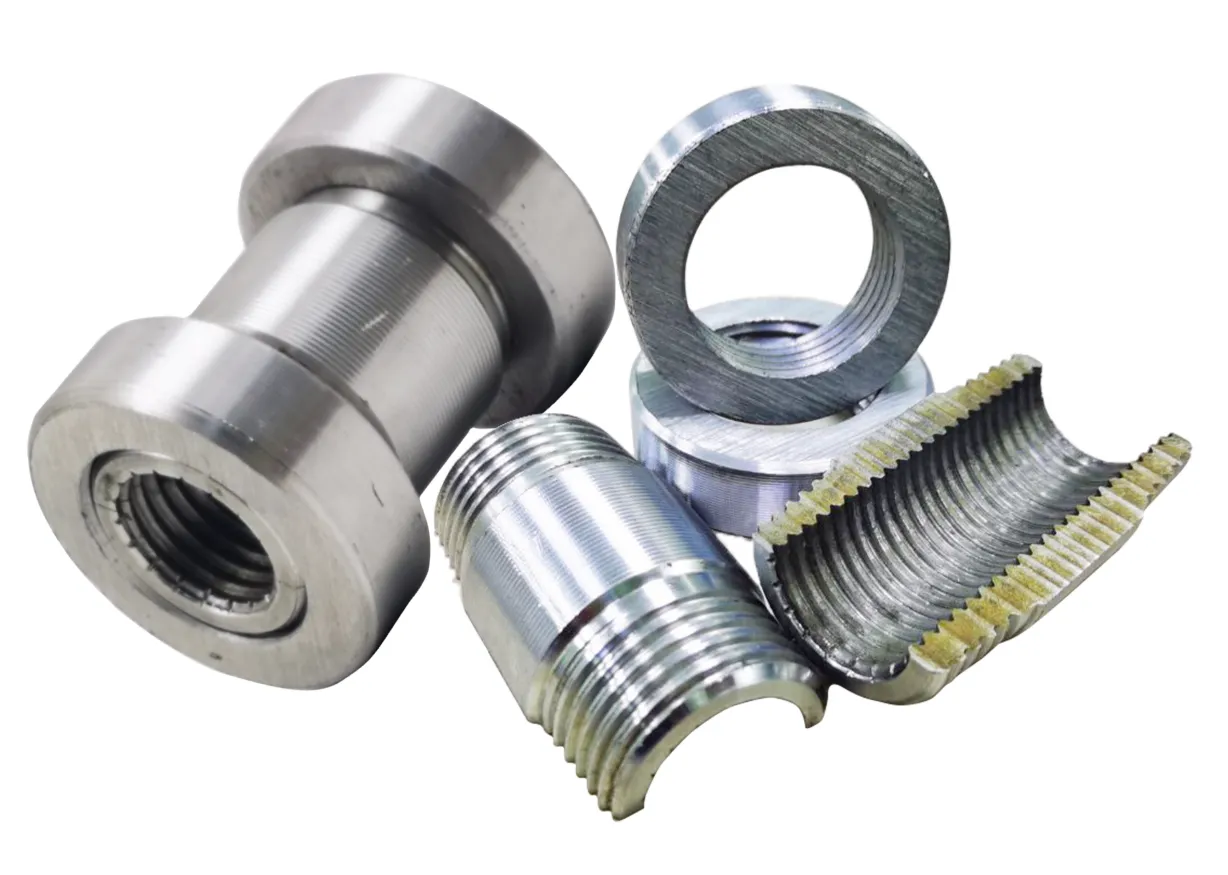Products Description
Introduction
The lock-nut type split sleeve is an efficient mechanical connection device for reinforcing bars based on the stripping and rolling straight thread connection technology. It consists of two symmetrical semi-circular sleeve-shaped components and a lock nut. The core design of this device is as follows:
1. Split structure: The inner wall of the semi-circular sleeve is machined with precise straight threads, which tightly engage with the external threads of the reinforcing bar's end; the two ends of the sleeve are tightened axially using the lock nut, and the combination of the lock nut's internal threads and the sleeve's external threads achieves dual locking, ensuring a stable connection that cannot be disengaged by itself.
2. Anti-loosening mechanism: The lock nut is specially designed (such as a hexagonal protrusion, an elastic retaining ring), which forms mechanical self-locking after being tightened. Combined with the screw thread engagement of the sleeve and the reinforcing bar, it can withstand vibration loads and dynamic stresses, avoiding the problem of easy loosening in traditional screw connections.
3. Materials and processes: It is manufactured from 45# high-quality carbon structural steel or alloy steel, processed through cold drawing, rolling, and heat treatment, with tensile strength ≥ 600 MPa and yield strength ≥ 355 MPa. The surface is treated with galvanization or phosphating, and the salt spray test lasts for ≥ 1000 hours without rust, meeting the requirements of JGJ 107-2016 "Technical Code for Mechanical Connection of Reinforcing Bars".
4. Working principle: The reinforcing bar end is formed with straight threads through stripping and rolling. After the two semi-circular sleeves are clamped together and inserted into the reinforcing bar, the lock nut is tightened to the designed torque. Through the screw thread engagement and the self-locking of the lock nut, an equal-strength connection of the reinforcing bar is achieved, without the need for welding or complex equipment.
Primary purpose
1. Construction Engineering:
◦ Suitable for the connection of beams, columns, and foundation reinforcement in scenarios such as high-rise buildings, bridges, subways, and nuclear power plants, especially for the对接 of reinforcing cage, and the connection of prefabricated components with cast-in-place concrete in complex conditions.
◦ Capable of connecting reinforcing bars of different diameters (diameter variation connection), or reinforcing bars fixed at the concrete, with high flexibility. For example, the No. 6 and No. 7 berths project of Ke Meng Port adopted the lock nut type split sleeve to optimize the connection of reinforcing cage, reducing the connection time of the single-pile reinforcing cage to 30 minutes, and the quality of the cast-in-place pile reached the first-class standard.
2. Special Environments:
◦ Not affected by rain, snow, or low temperatures (-25°C to + 60°C), can operate in humid or cold environments, and does not require open flames, with high safety.
3. Seismic and Dynamic Load Structures:
◦ The anti-loosening design of the lock nut and the dispersion of stress through double threads, with excellent fatigue performance, can withstand more than 2 million repeated loads, suitable for dynamic load engineering such as bridges and rail transit.
4. Power Engineering:
◦ In the cast-in-place pile foundation of ultra-high voltage lines, replacing the traditional welding process, solving the problem of long reinforcing cage and the difficulty of on-site welding, shortening the construction period and reducing the risk of hole collapse.



